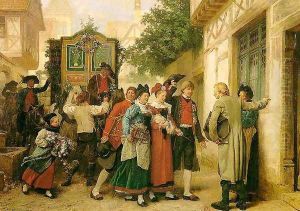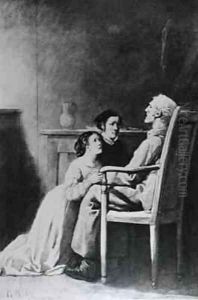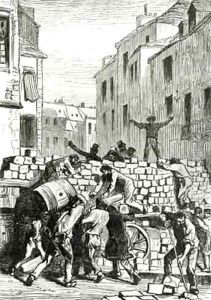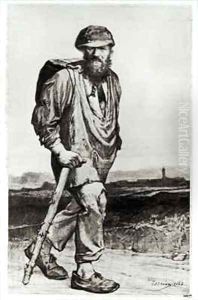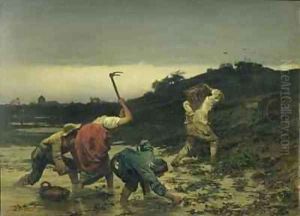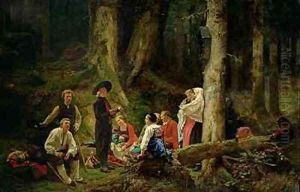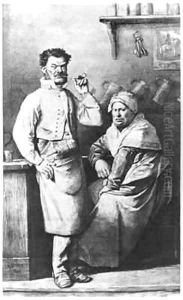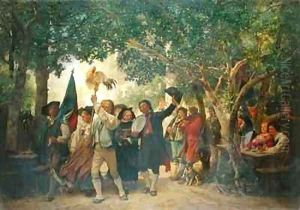Gustav Brion Paintings
Gustave Brion was a French artist born on February 17, 1824, in Rothau, France. He is best known as a genre painter and illustrator with a focus on rural and Alsatian themes. Brion's work is characterized by its detailed depiction of local costumes and traditions, as well as its portrayal of rural life in 19th-century France.
Brion received his artistic training at the École des Beaux-Arts in Paris, where he studied under the guidance of Gabriel-Christophe Guérin. He made his debut at the Paris Salon in 1847, gaining recognition for his detailed and realistic portrayals of peasant life. His work resonated with the public, who found a sense of authenticity and nostalgia in his depictions of the French countryside.
Throughout his career, Brion's artwork was well-received, and he was awarded numerous medals at the Salon for his contributions to French art. In addition to painting, he was also a successful illustrator, providing artworks for books such as Victor Hugo's 'Les Misérables'—his illustrations for the novel are among his most famous works and contributed to his popularity.
Brion's approach to genre painting was influential in his time, and he was known for his ability to capture the essence of rural existence. His scenes often included family gatherings, festivals, and daily activities of the peasantry, rendered with a sense of warmth and empathy. Though he did not achieve the same level of fame as some of his contemporaries, his work remains an important record of rural French life in the 19th century.
Gustave Brion died on November 14, 1877, in Paris. His paintings and illustrations continue to be of interest to art historians and collectors, and his contributions to French art are commemorated in various collections, including the Musée d'Orsay in Paris. Despite the passage of time, Brion's work provides a window into the past, preserving the cultural heritage of rural France for future generations.
